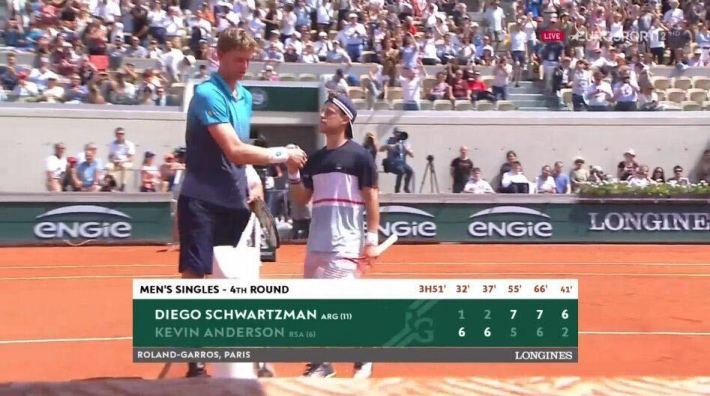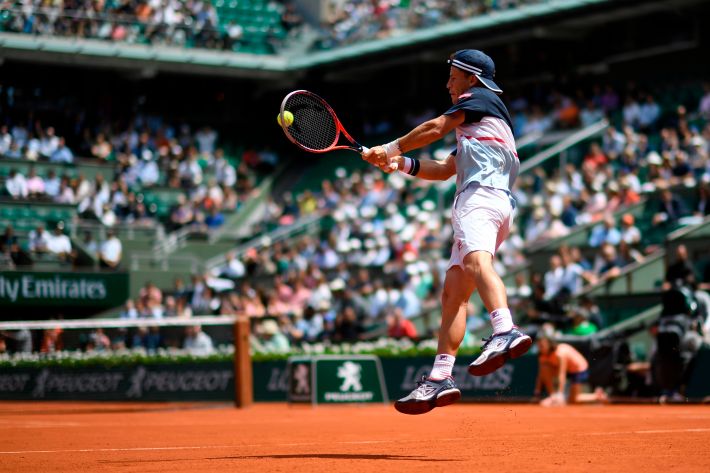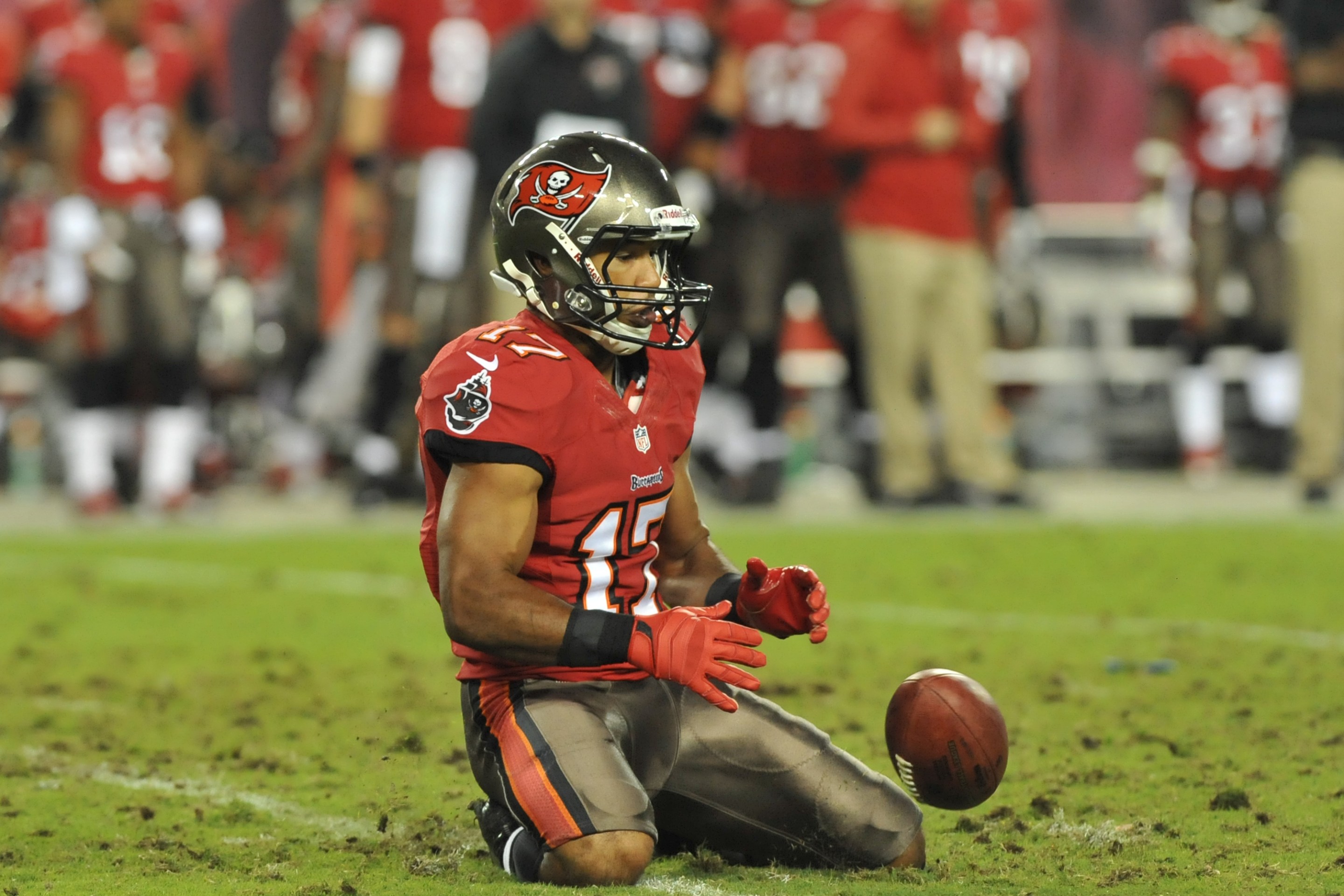In wildlife preservation, pandas are said to be “charismatic megafauna”—big, appealing creatures that attract attention to the cause. In men’s tennis, Diego Schwartzman may qualify as charismatic microfauna. Both are rare in their respective ecosystems, and charming to behold, though Diego, fortunately, moves much, much faster. When the 28-year-old dips his racket to begin his serve, it comes within inches of scraping the court. Within seconds of watching him flit around the court, you notice that the proportion of racket to arm is unlike any other you have seen out there, and you see his play does not resemble the play of anyone else in his profession. You realize that he is effectively alone in men’s tennis: a dominant player who stands 5-foot-7, in a field that is increasingly populated by men who wouldn’t look out of place in an NBA backcourt. Having stood next to Schwartzman, I suspect that his official tour measurement is a little generous, too.
At the 2017 U.S. Open, Schwartzman became the shortest man to reach a major quarterfinal in 23 years; he’d reprise that performance at the 2019 U.S. Open. He has flirted at the edges of the top 10, having reached No. 11 in the world, and will be right up there again after making it to the finals of the Italian Open last week. Along the way, he became one of a handful of men to beat Rafael Nadal on clay in recent history. Should Schwartzman eventually break into the top 10, he would become the shortest top-10 player since the 5-foot-6 Harold Solomon hit those rankings heights in the late '70s. This era is dominated by 6-footers blasting big serves and profiting off the easy points. Those points aren’t available to Schwartzman; the angles required for him to hit serves that big aren’t physically possible. The work gets that much harder. So appreciate the Argentine known as “El Peque”—Shorty—while we have him. Because if you have spent a few hours watching him slay an ace-flinging giant, or hurl himself off the hard court to strike a ball seven feet in the air, or bludgeon forehands over 100 mph, you will realize the little dude in the backwards hat has one of the most entrancing skill sets in his or any sport. The narrative he creates does not escape his notice: “I read David and Goliath when I was young in the school, and I just try to think of that when I see Kevin or the guys who are two metres,” he told reporters after a French Open win over 6-foot-8 Kevin Anderson in 2018.

On any level of analysis, it was prohibitively unlikely that Schwartzman would ever find himself near the top of professional tennis. Money was the first hurdle. Tennis is expensive—international travel, coaching, and medical expenses all come out of pocket—and it requires an upfront investment early in life. Most of the money to be made in it is concentrated at the very top of the rankings. The Schwartzman family business went bankrupt in the late '90s as Argentina’s economy slunk towards crisis. The year 2001, when Diego turned nine, saw all of the following: the country defaulted on its debt, its currency lost two-thirds of its value overnight, the government froze personal bank accounts, and unemployment neared 20 percent. The Schwartzmans, raising a family of four, sold rubber bracelets for three pesos a pop, which Diego helped peddle in his downtime. These funds went straight to his tennis expenses, he told me, as we sat on a bench to escape the punitive sun during the 2018 U.S. Open. “My family tried to don’t—come se dice ‘mostrarme’?—show me, show me nothing. Trying to just helping, and that’s it,” he said.
Then there was, of course, size. When Schwartzman was 13, a doctor told him he would never grow past 5-foot-7, at which point he considered abandoning the game altogether. Feedback from early coaches was similarly dire. “The people was not lying to me, just trying to be realistic. Many people said it’s not going to be easy,” he told me. “And it was true.” Tennis has only gotten taller since Schwartzman was learning the game in the aughts. At time of writing, the shortest man in the top 10 is 6-foot-1; five of those men are 6-foot-4 or taller. Yoshihito Nishioka, currently No. 50 in the world, is the only other player 5-foot-7 or shorter in the top 100. Back in 1976, Solomon reached the final of the French Open and the world No. 4 ranking. “I really doubted whether there would be anybody, going forward, that would be able to have a similar type of record that I had in the game, being my size,” Solomon said on the phone from Fort Lauderdale, Fla., where he is a coach and keen observer of the modern game. “A lot of people would bet against somebody his size being able to do what he’s done. I mean, I would’ve bet against it.” With changes in racket technology and a deeper talent pool, the sport has only become more athletically demanding, unrecognizable from the days of Solomon rolling moon balls at Roland Garros.

And there was the issue of surface. Like so many South American players, Schwartzman grew up on the clay. It took him a few seasons to start winning on the pro tour, and even then most of his wins were relegated to that surface, which played to his strengths—movement, consistency—and mitigated his chief weakness—the serve. But the tour lasts all year long, and hops to different countries and court surfaces, so to reach the heights that Schwartzman has, a player must adapt to new terrain. Hard courts reward big serving and big hitting over short points; grass courts tend to intensify that dynamic. You can trace a steep learning curve over Schwartzman’s career results. It wasn’t until 2014, when he was 22, that he broke into the top 100, mostly on the strength of his clay court wins. It wasn’t until 2017, the season that he cracked the top 50, that he started winning consistently on hard courts—at which point he began winning a lot. And it wasn’t until 2019 that he even won his first matches on grass, and then he made the third round of Wimbledon. Each of these leaps forward felt somewhat improbable, until they happened, even to the man himself. “My game is not easy to do there,” Schwartzman said of grass when we spoke in 2018. Checking in with him again at the 2019 U.S. Open, when he was fresh off his first-ever grass wins: “I think my kind of shots and my game could be good for grass. So I think it’s just having the confidence to do well.”
Now a top-20 staple, Schwartzman has found that confidence on every court surface, and against the highest quality opponents to ever live. He said a close 2017 loss against Rafael Nadal in the quarterfinals of the Monte Carlo Masters transformed his picture of his own potential; he would take Novak Djokovic to five sets at the French Open a few weeks later. Skip to last week, and he beat the former in straight sets, and narrowly lost to the latter in the Rome Masters final. Dating back to the 2017 season, Nadal is 73-6 on clay courts; with his win in Rome, Schwartzman became one of just four men to beat the greatest-ever clay court player in that span. Each close contest earns him more credibility in the eyes of his elite opponents. “The people is watching you,” he said. “Then you take more respect from them.”
To understand the magnitude of Schwartzman’s accomplishments, it’s worth getting specific about what he cannot do. The concise version is that he cannot end points as straightforwardly as bigger players can. Anyone can start a point—even you can, provided you can dink the ball into the service box—but ending the point on your terms is the basic task of winning a tennis match. Can you consistently produce a shot that your opponent will struggle to get back into play? The most efficient way to end points is with a serve. Many top players pop serves north of 130 mph that go unreturned or weakly returned. They feast on what you might call “free points.” Winning a point with a single swing of the racket remains the most sustainable gameplan for winning a match; it saves the player’s legs the hard work of a long rally. That taller players serve better can be best understood by looking at the geometry of the court, but a quick-and-dirty heuristic is that they can hit “more down” into the court. When 6-foot-10 John Isner serves, his racket can make contact with the ball as high as 11 feet in the air, according to Hawk Eye on-court cameras. That affords him an extremely generous margin to strike the ball down, hard, while still clearing the net, and get the ball bouncing unreachably high on the other side.

Serve aside, bigger players enjoy the perks of greater power and spin—a longer arm produces more torque, which gets the racquet head moving faster—and greater reach—which is relevant in a sport premised on retrieving balls that have been strategically placed as far from you as possible. The biggest strokes in the game, such as the forehand of 6-foot-5 Matteo Berrettini or one-handed backhand of 6-foot-1 Dominic Thiem, generally belong to well-built players with imposing core and leg strength. Striking a tennis ball well is mostly a question of maddening technical precision, but bare physical advantages do reveal themselves at the extremes of performance.
So: a short player has some problems from the get-go. Diego Schwartzman embodies an elegant solution to all these problems. He inverts the typical logic of the game. Because the serve is a weapon, tennis players tend to feel more comfortable when serving; Diego, however, told me he relishes returning even more. It’s not an exaggeration to say that his return game makes his whole career viable. Since 2017, he has consistently ranked among the top three players on tour in percentage of return games won, winning about a third of them each season, and he takes pride in that. When I mentioned that Djokovic had narrowly edged him out in that statistic on the 2019 season, an eyebrow leapt up: “Ah yeah? He passed me? Fuck!” At the end of that season, I looked at the top 80 players on tour and studied the gap between serve and return performance. Of all these players, Schwartzman had the smallest gap between his service games won (75.3 percent) and return games won (31.5 percent)—a tiny 43.8 percent. It’s all just tennis to him. On the other extreme of size and style, the 6-foot-10 John Isner won 94.0 percent of service games and 9.7 percent of return games, for a 84.3 percent gap. He could sit down and cat-nap through the return games and still have roughly the same level of success. But nothing is coming easy for Schwartzman, who digs in for every single game, who can never microwave some aces to have a meal.

Returning the contemporary first serve requires a player to do all of the following: locate an object moving too fast for most people to really visually track, move to get into its way, and swing the racket such that the fast-moving object is redirected over the net and into the opposing court. It is laughable that anyone can do it with any regularity, and watching Schwartzman at work, up close, is as astonishing an athletic feat as I have ever seen. As the server tosses the ball, Schwartzman gets happy feet, hopping from one foot to the other, three times. This primes him to move laterally in either direction, without giving away which way he plans to go. Then comes a blur of quick decisive steps to intercept the ball’s path, and a firm swing. He chalks up his success to two things: his ability to intuit where the server plans to aim, and his ability to recover extremely quickly from the return to play a strong second ball. Maybe that second bit best explains how he defuses lethal serves consistently enough to win one in three return games: He is able to reset the point to neutral, to make it look as if no one player ever had the opportunity to, say, throw the ball into the air and smash it down undisturbed. His ability to get points going stands out. More often than not, a returner is taken out of position by a well-aimed serve and has no chance of playing a decent shot on the next ball, even if the return landed in. Schwartzman, meanwhile, has played his return and already scurried back into a comfortable position to rip the next one.
Once the serve has been neutralized and the rally is anyone’s to win, Schwartzman’s footwork and raw speed continue to shine. You could while away a whole match just watching his feet. Athletes are often celebrated for their economy of movement, but I prefer to turn on Schwartzman’s best rallies and marvel at how many tiny discrete steps he can fit into a second of time. See expanses of clay gobbled up by this pitter-patter, which smooths into an elegant skid as he reaches to scoop up a drop shot or dig a ball out of the doubles alley. Points are often at their best when they resemble the dance of cat-and-mouse, and I submit there is no more charming mouse in tennis. The sport’s bygone short king Harold Solomon was particularly impressed by how quickly Schwartzman regains his position at the center of the court after being yanked out of position. “He recovers great out of the corners—it’s probably the best thing he does,” he said. Contrary to expectations for a player of his stature, Schwartzman doesn’t play a passive, defensive style that relies on his ability to retrieve everything. He hits powerful, flat strokes and looks to seize command of rallies at the earliest opportunity. That means exploiting his movement to get to the ball even earlier than the opponent anticipated.
“He uses his speed not only in a defensive manner, but also in an offensive manner—to take the ball early, put pressure on people. Because when you’re a little guy like that, you really can’t let the ball get up too high on you, you lose power,” said Solomon. The best of Schwartzman was on display in his win last week in Rome over Nadal, who is infamous for his shots that bounce up off the court and past head height due to his trademark topspin. Schwartzman, undeterred, can stand close to his baseline and strike the balls on their way up before they get too high. The sense of timing required to do that is impressive in general; the margins for success are even narrower at 5-foot-7. “If you go back, the ball is bouncing really high, and you start to just hit defense every point. So you need to stay there, no matter what he is doing, and try to be aggressive,” he said of playing Rafa. The upshot of taking that risk and hitting the ball early, though, is the opponent has even less time to recover from their last shot. Schwartzman has sent the ball headed right for their shoestrings before they’ve had a chance to finish their last swing.

Having the right tools for the job helps, too. Schwartzman uses a 28-inch long racket, which is a full inch longer than the standard model. He likes the longer frame because it extends his reach and, by increasing torque, allows him to hit even harder. But in terms of offsetting height, equipment can only do so much. It also helps to have preternatural speed, balance, change of direction, and the mindset that comes with having conquered this particular set of disadvantages. “Knowing that you’re smaller, knowing that you can’t afford to give away points, knowing that you have to work harder, it just creates a different kind of character, I think,” Solomon said. “A work ethic and character that’s necessary to stay on top of things.”
Whoever came out on the other end of that strange journey would indeed have to squint at the world differently, to see possibility where there was very little precedent. I sometimes hear the idle questions—what if Diego Schwartzman were 6-foot-2? Wouldn’t he be a multiple-major winner? But I couldn’t be less compelled by the hypothetical. If Diego Schwartzman were 6-foot-2, he would look a lot like half the players on the tour. If he were 6-foot-2, the sport wouldn’t have a one-man counterexample to all its prevailing trends, an athlete who answered every tough question asked of him. They serve big? He’ll return big. They have power? He’ll run up to every ball and smack it just as hard. They get free points? He’ll work for all his. Yes, throw him on a medieval rack, stretch him out to supermodel size, and sure, he’d probably be a decent player—but then tennis wouldn’t have a Diego Schwartzman, and what could be richer about a world like that?






